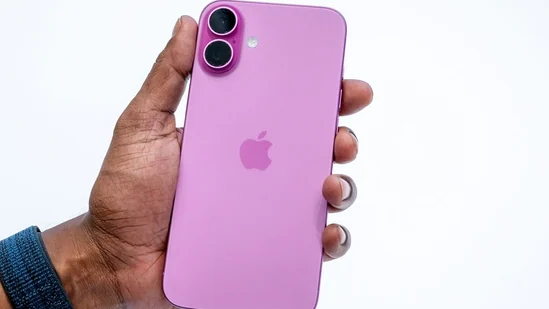iPad Pro M4: Apple’s Thinnest Device
At just 5.1mm, the iPad Pro M4 currently holds the title as Apple’s thinnest product. This sleek design marks a significant achievement for the company, setting a new standard for thinness in its lineup of devices. However, Apple’s upcoming iPhone 17 Air, rumored to launch late next year, was expected to break this record and become the new benchmark in slimness. Despite these ambitious plans, reports indicate that the iPhone 17 Air might not meet its original design goals.
Technical Challenges Delay the iPhone 17 Air’s Design
A report from Naver Blog suggests that Apple has encountered technical roadblocks that will likely prevent the iPhone 17 Air from being as thin as initially intended. The company had planned to utilize a new battery technology featuring a thinner substrate, which would have reduced the phone’s overall thickness by several millimeters. Unfortunately, Apple has faced difficulties with the new technology’s performance and cost, leading the company to revert to the current, thicker battery technology.
Impact of Battery Technology on Design
The thin battery design was crucial to Apple’s original vision for the iPhone 17 Air. By using a more compact battery, Apple hoped to shave off precious millimeters from the phone’s overall size. However, technical and cost-related hurdles have forced Apple to abandon this innovation for the time being. As a result, the iPhone 17 Air will likely fall short of its initial thickness goals but will still remain thinner than its predecessors.
The iPhone 17 Air: Slimmer Than the iPhone 6
Despite these setbacks, the iPhone 17 Air will still be thinner than Apple’s thinnest smartphone to date, the iPhone 6. Released in 2014, the iPhone 6 was infamous for its “bendgate” controversy, but it still represented a significant leap forward in smartphone design. The iPhone 17 Air is expected to measure slightly thinner than the iPhone 6 and will be notably slimmer than the iPhone 16 series, which measures around 6mm.
A 120Hz Display and New Features
The iPhone 17 Air will introduce several exciting features, including a 120Hz display, which will be the first such feature in a non-Pro iPhone model. This move represents a significant upgrade for users who have long been waiting for smoother, more responsive displays across all iPhone models. Alongside this, the iPhone 17 Air is expected to feature Apple’s next-generation A19 chip, promising faster performance and improved efficiency compared to its predecessors.
Enhanced User Features: Action Button and Camera Control
In addition to the hardware improvements, the iPhone 17 Air will include a suite of new software features. These include an Action Button, Camera Control enhancements, and further developments in Apple Intelligence. These additions are designed to improve usability and performance, ensuring that the iPhone 17 Air delivers a premium experience, even if its physical design isn’t as thin as originally planned.
Samsung’s Galaxy S25 Slim: A Competitor Emerges
As Apple faces these challenges with the iPhone 17 Air, Samsung is also working on a competing device. The Galaxy S25 Slim, which is rumored to launch in the second quarter of 2025, is expected to be Samsung’s thinnest flagship smartphone to date. This device will compete directly with the iPhone 17 Air in terms of slimness and design, setting up a battle between the two tech giants for dominance in the high-end smartphone market.
Apple’s Focus on Performance Over Thinness
Although the iPhone 17 Air might not reach the extreme thinness originally envisioned, Apple’s focus on performance and user experience remains a priority. By sticking with the proven battery technology, Apple ensures that the device will be both reliable and functional. The inclusion of powerful new features like the A19 chip and the 120Hz display demonstrates Apple’s commitment to delivering top-tier performance alongside a sleek design.
The Challenges of Innovating Thin Devices
Apple’s decision to revert to older battery technology highlights the challenges of innovating within the constraints of cost, reliability, and performance. While consumers often prioritize thinness, it is clear that companies must balance this desire with other factors such as battery life and component durability. Apple’s choice underscores the complexity of designing cutting-edge devices that meet the expectations of both engineers and consumers.
Looking Ahead: iPhone 17 Air’s Potential
Despite the setbacks, the iPhone 17 Air is still set to be a standout device. Even if it doesn’t become the thinnest iPhone ever, it will still offer a range of innovations that could make it a major hit with consumers. From the 120Hz display to the powerful A19 chip and the new features Apple has introduced, the iPhone 17 Air will remain a flagship device that competes strongly with other high-end smartphones like Samsung’s Galaxy S25 Slim. With its official release expected by the end of 2025, Apple is poised to continue its leadership in smartphone technology.



 Viesearch - The Human-curated Search Engine
Blogarama - Blog Directory
Web Directory gma
Directory Master
http://tech.ellysdirectory.com
8e3055d3-6131-49a1-9717-82ccecc4bb7a
Viesearch - The Human-curated Search Engine
Blogarama - Blog Directory
Web Directory gma
Directory Master
http://tech.ellysdirectory.com
8e3055d3-6131-49a1-9717-82ccecc4bb7a